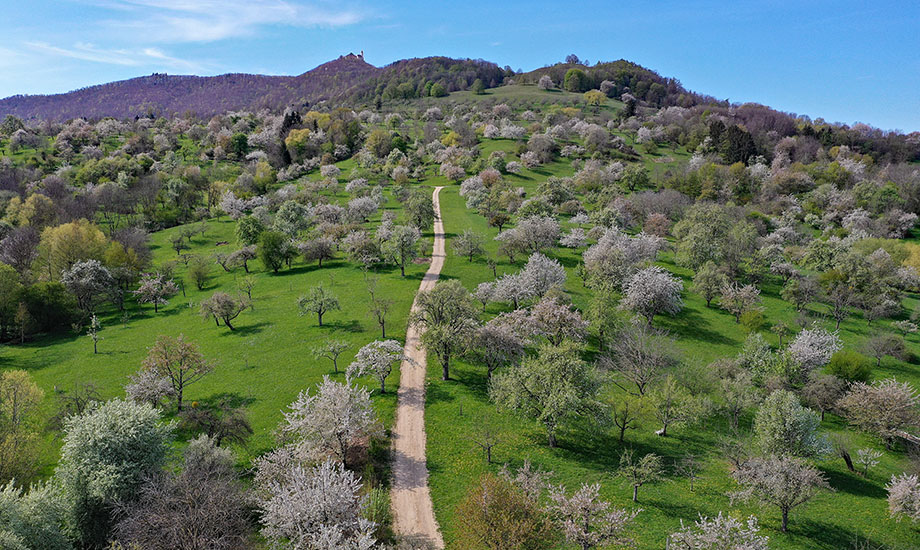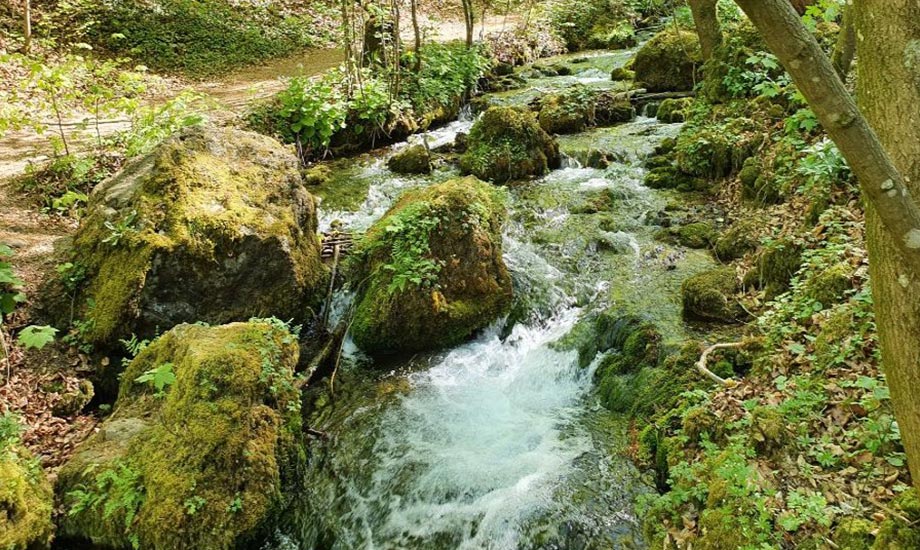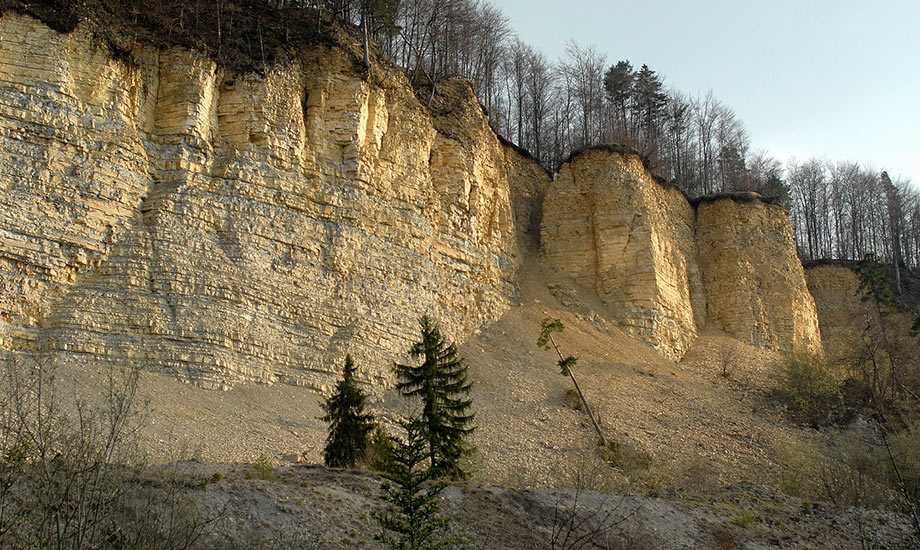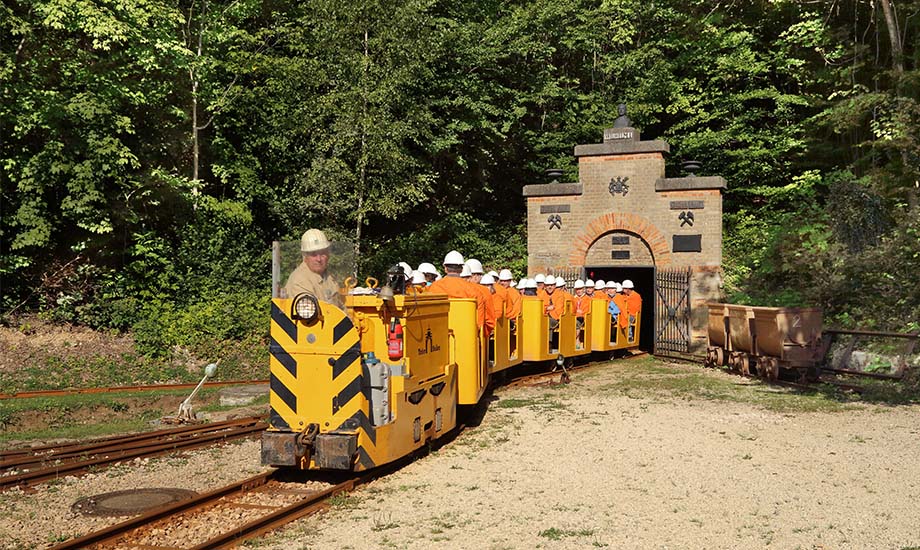Middle Jurassic
The clays and sandstones of the Middle Jurassic are found in the area of the Albtrauf on the northwestern edge of the Swabian Alb. They emerge as a relatively thin band between the surface of the Lower Jurassic strata and the steep slope of the Upper Jurassic. The boundary between Middle Jurassic (gentle hills with scattered orchards in the Alb foothills) and Upper Jurassic (rugged cliffs on the Alb ascent) is usually clearly visible.
Brownish sandstones rich in iron oxide led to the also common name "Brown Jurassic". In the Middle Jurassic period, about 160 million years ago, they were deposited in a sea closer to land and especially in a cooler water. Numerous shells and ammonites with partly opal shimmering shells ("opalinus clay") can be found.
At this time the area of the eastern Alb was closer to the mainland than the western Alb. The different deposition conditions can still be seen in the terrain today. In the area of the Middle Alb, the Donzdorf sandstones form a first layer in the terrain. In former times, these sandstones were in great demand as building stones, e.g. for the construction of the Ulm Cathedral. They belong to the formation of the so-called iron sandstone. With an ore content of over 30 percent, these layers used to be interesting for mining. For example, about 30,000 tons of ore per month were extracted from the "Karl" mine near Geislingen until 1963. In the Tiefer Stollen visitor mine near Aalen, iron sandstone can still be seen on the gallery walls today.
Very true, the Alb is often described as "a colossus with feet of clay", because in fact the mighty Alb escarpment stands on the slippery Ornatenton, the uppermost Middle Jurassic layer. Here, part of the water that has seeped into the karstified Upper Jurassic limestone reappears in the form of springs. Erosion at the outlets contributes to the fact that parts of the Alb keep sliding down. The clay-rich strata of the Middle Jurassic are therefore feared by road builders and house builders alike. The attentive observer recognizes them by crooked and slanted trees that try to balance the slipping away of their roots by so-called "hooking". This is also referred to as sickle growth.



